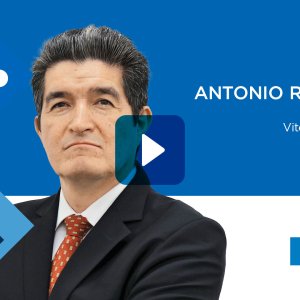Guanajuato, Pro-Business Government Makes for a Competitive State

STORY INLINE POST
Q: What elements have contributed to Guanajuato’s position as an economic development driver for the country?
A: Part of the state’s success is rooted in continuity. We are one of the few states that has maintained policy continuity thanks to our planning institution, IPLANEG. There has been a clear delimitation of objectives and these have been followed up across different administrations, since many of these are medium and long-term projects. For members of Guanajuato’s public administration, it has been a matter of prioritizing objectives rather than having a political agenda.
Q: What type of relationship does Guanajuato have with investors?
A: We know that we need to create jobs and wealth and the only way to do that is through the private sector. Guanajuato is a pro-business state and we have defined clearly that our purpose is to be facilitators. While we have chosen to develop specific niches, such as the automotive industry, we believe that one of the state’s strengths is its economic diversification. While the automotive industry contributes almost 18 percent of the state’s GDP, the agro-industrial sector is just 2 percentage points behind the in terms of GDP contribution. Other sectors such as leather and footwear contribute 10 percent to GDP. Tourism and logistics contribute 9 percent and the agro-chemical sector delivers 8 percent.
Q: How is the government working to make Guanajuato a hub for Industry 4.0 and other advanced technologies?
A: We are conscious of the transformation that Industry 4.0 brings. However, we also understand the difference between being innovative and inventive. Innovation involves mixing things that already exist and creating something new that impacts returns. If changes are not reflected in a company’s results, then they are not innovative but inventive. While invention is needed, it tends to be a long-term strategy that can be fairly expensive. Both the country and Guanajuato need to focus more on innovation rather than on invention to make the most of the investment needed to implement either.
Q: What are the state’s strategies to continue promoting exports from different sectors?
A: Guanajuato has transformed when it comes to exports. Twenty-five years ago, the state’s exports were below US$300 million but in 2019 alone we finished with over US$24 billion. Much of this depends on the development of a state policy. Guanajuato has an institution called COFOCE, which was created before ProMéxico. In fact, when former President Vicente Fox created ProMéxico, it was modeled on COFOCE. We support this trade promotion agency, which is a key differentiator against other states. In addition to COFOCE, we have an institution to boost internal trade. We want MSMEs to participate in global production chains and become suppliers, boosting the state’s exports.
Q: What are the government’s medium and long-term objectives?
A: We have two priorities, both targeted toward digitalization. The first is education, which requires a focus on science and math skills. We encourage local schools and universities to focus on these areas because we need more engineers, technicians and mathematicians.
Our second priority is electricity. Competitive manufacturing is linked to market access and competitive energy conditions. So, we are putting a lot of emphasis on trying to increase the electricity generation within the state through natural gas or clean energy, either solar or wind.
Q: What synergies has the government established with industrial parks developers?
A: The state has over 50 industrial parks but we have more than 2,000ha ready and fractioned to receive companies from anywhere in the world. Guanajuato state has an economically active population of 2.6 million people. We have enough population to support future growth, either in the manufacturing or mindfacturing (engineering and innovation) sectors.
Q: What is the relevance of the mindfacturing niche the state is trying to boost?
A: In the same way we moved from the primary to the secondary sector, we now are immersed in a transition toward the services sector and the mindfacturing era. We are trying to improve the income and quality of life for people in the state. We know that the global economy is moving toward the mindfacturing model and that is what we are trying to do.
Q: What advantages does Guanajuato offer in terms of connectivity and infrastructure for companies settling in the country?
A: Logistics is important for companies and is among the factors that can either make or break a business. Guanajuato is located in the heart of Mexico and we are among the few points in the country where you can find a railway intersection. This means that we can cluster merchandise that comes from the North Atlantic region and the North Pacific region. Merchandise coming from the North Atlantic region enters the country through the ports of Altamira, Veracruz and Tampico. Meanwhile, from the North Pacific, products enter the country through Manzanillo and Lazaro Cardenas. On average, every port is located less than 600km from Celaya, which is where we find this railway intersection.
It is important to mention that the country’s two most important highways, the 57 and the 45, cross the state. We have an international airport and can easily access international airports in other states, such as those in Morelia, Queretaro, San Luis Potosi and Aguascalientes.
Q: How would you characterize the development of automotive suppliers in the state?
A: The automotive industry is experiencing an important change. We know that vehicles are quickly adapting to electrification. We are trying to support this change alongside OEMs. Guanajuato hosts seven OEMs: Toyota, GM, Mazda, Honda, Hino Motors, Ford with a transmissions plant and Volkswagen with an engine facility. These OEMs bring their suppliers, so we have over 500 transnational companies and many of them work in the automotive sector. Furthermore, Guanajuato’s offering is well-complemented by neighboring states like Queretaro, San Luis Potosi and Aguascalientes. This helps us to create a regional cluster. We know that we can improve in several areas of the automotive supply chain. If we could attract automotive steel mills, we feel this would help us to complement the automotive cluster.
Q: How do you expect the state’s automotive industry to evolve in the coming years?
A: The automotive industry is becoming more digitalized, which is why it is important to start developing talent that focuses on mathematics and science. We know that autonomous vehicles are coming and that they will need 5G communication networks, robotics and high levels of electricity at a competitive cost. The state is trying to anticipate all this and to attract investment in electricity generation and talent development. We have highly renowned academic institutions, including UNAM, which will soon open its second campus in the state, IPN, Tecnológico de Monterrey, Universidad Iberoamericana, Universidad La Salle University, Universidad de Celaya and regional technologic universities.
Q: What is the relevance of the Center-Bajio-West Alliance and how do you expect it will contribute to the region’s economic growth?
A: The alliance is between states of Queretaro, San Luis Potosi, Aguascalientes, Guanajuato and Jalisco. The economy of these five states is similar to Peru’s economy and slightly smaller than the Chilean economy. These five states contribute 25 percent of the country’s agro-industrial production and have over 20 million inhabitants, with an average age of 25 years.
Within the alliance, Guanajuato has the second-largest population and we have a privileged climate for the development of the agro-industrial sector. We have a leather and footwear industry that generates almost 80 percent of the footwear in the country. Moreover, we have important logistics companies like Transportes Castores and Tresguerras, which are local companies.
Q: What are the alliance’s short-term initiatives?
A: We know that infrastructure is primordial for competitiveness. Today, competitiveness does not only come from productivity but from a ripe ecosystem. With this alliance, we are trying to create this ecosystem and we are focusing on improving the existing infrastructure. This entails personnel mobility, logistics of products and raw materials, security, training and generation of electric energy at competitive prices. We also want to standardize permits for opening new businesses in all five states.
Mauricio Usabiaga has a long business background in the state of Guanajuato’s food sector. He was Co-founder and Director General of several companies, including SuSazón, Suve del Bajío, and Altamesa. He was also President of the food and agribusiness sector in the state of Guanajuato.








 By Gabriela Mastache | Senior Journalist and Industry Analyst -
Mon, 05/25/2020 - 17:33
By Gabriela Mastache | Senior Journalist and Industry Analyst -
Mon, 05/25/2020 - 17:33
















